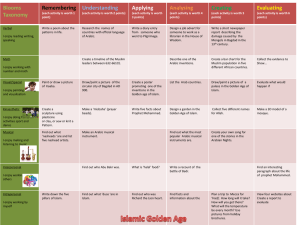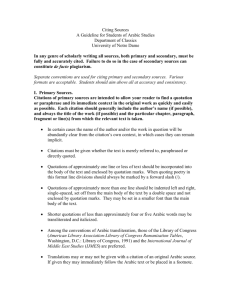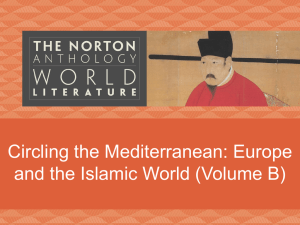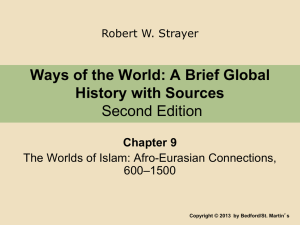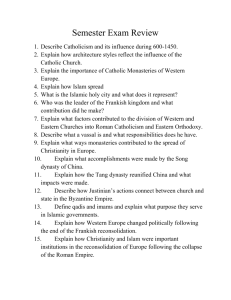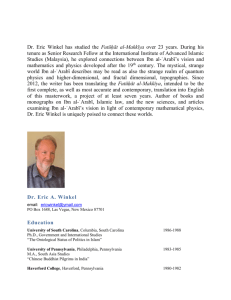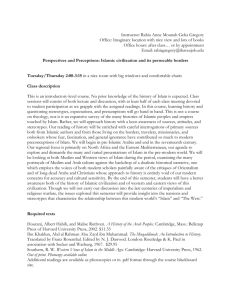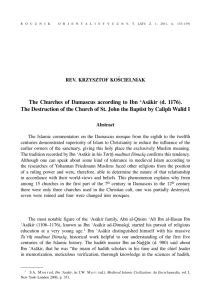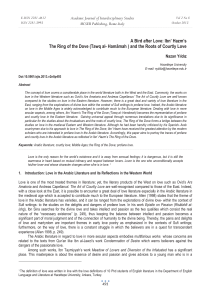3c: The Golden Age of Islam
advertisement
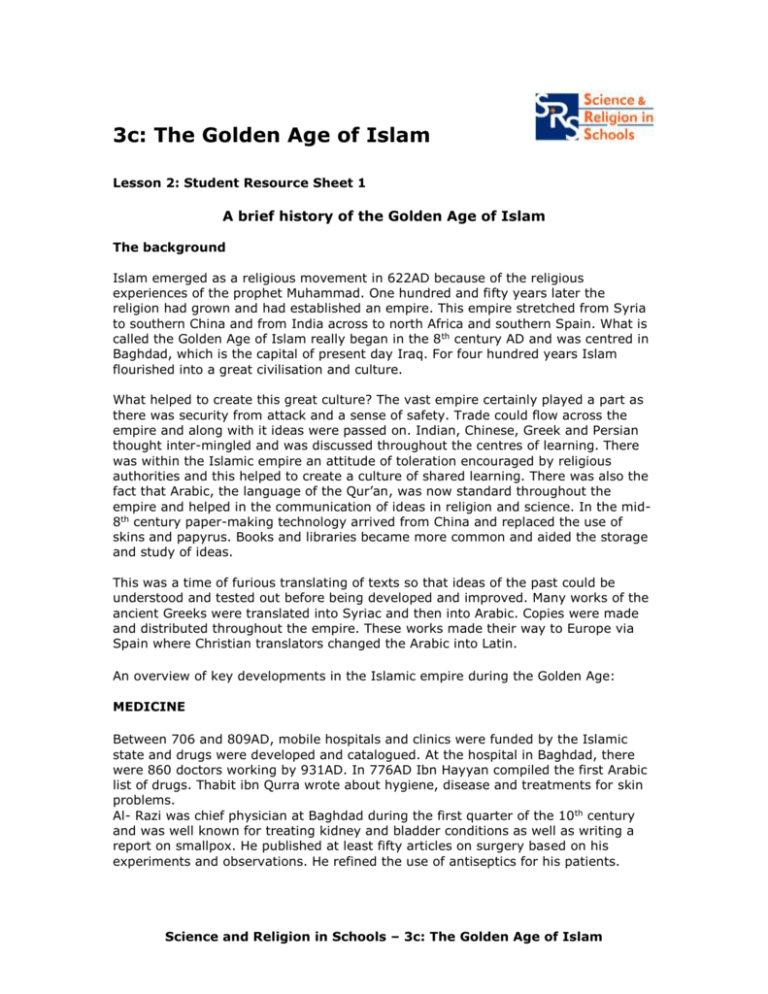
3c: The Golden Age of Islam Lesson 2: Student Resource Sheet 1 A brief history of the Golden Age of Islam The background Islam emerged as a religious movement in 622AD because of the religious experiences of the prophet Muhammad. One hundred and fifty years later the religion had grown and had established an empire. This empire stretched from Syria to southern China and from India across to north Africa and southern Spain. What is called the Golden Age of Islam really began in the 8th century AD and was centred in Baghdad, which is the capital of present day Iraq. For four hundred years Islam flourished into a great civilisation and culture. What helped to create this great culture? The vast empire certainly played a part as there was security from attack and a sense of safety. Trade could flow across the empire and along with it ideas were passed on. Indian, Chinese, Greek and Persian thought inter-mingled and was discussed throughout the centres of learning. There was within the Islamic empire an attitude of toleration encouraged by religious authorities and this helped to create a culture of shared learning. There was also the fact that Arabic, the language of the Qur’an, was now standard throughout the empire and helped in the communication of ideas in religion and science. In the mid8th century paper-making technology arrived from China and replaced the use of skins and papyrus. Books and libraries became more common and aided the storage and study of ideas. This was a time of furious translating of texts so that ideas of the past could be understood and tested out before being developed and improved. Many works of the ancient Greeks were translated into Syriac and then into Arabic. Copies were made and distributed throughout the empire. These works made their way to Europe via Spain where Christian translators changed the Arabic into Latin. An overview of key developments in the Islamic empire during the Golden Age: MEDICINE Between 706 and 809AD, mobile hospitals and clinics were funded by the Islamic state and drugs were developed and catalogued. At the hospital in Baghdad, there were 860 doctors working by 931AD. In 776AD Ibn Hayyan compiled the first Arabic list of drugs. Thabit ibn Qurra wrote about hygiene, disease and treatments for skin problems. Al- Razi was chief physician at Baghdad during the first quarter of the 10 th century and was well known for treating kidney and bladder conditions as well as writing a report on smallpox. He published at least fifty articles on surgery based on his experiments and observations. He refined the use of antiseptics for his patients. Science and Religion in Schools – 3c: The Golden Age of Islam In Muslim Spain, surgical writings were translated and written by Ibn Zuhr who was interested in diet and how to treat illness. Ibn al-Khatib from Granada identified some of the ways in which illnesses are spread. Medical books like Ibn Sina’s Canon of Medicine influenced Europeans significantly and many of the chief medical textbooks used in Europe were Arabic. MATHEMATICS From India at this time came the idea of zero which transformed mathematics, in particular the use of units of ten, one hundred etc. Islamic mathematicians made good use of this in their work. Al-Khwarizmi in the 9th century developed ways of solving equations and made algebra more popular by explaining how to do it. He also found methods to deal with complex problems in mathematics like square roots and fractions. In the 10th century, ideas in trigonometry (triangles and angles) were developed by Al-Battani. This was useful in measuring objects and their distance away from the viewer. A book on trigonometry by Al-Kirmani was translated into Latin and read throughout Europe. It led to a better understanding of the sine and cosine functions in maths. ASTRONOMY Important 9th century figures like Habash al-Hasib and al-Jawhari worked out accurate astronomical tables for computing the positions of planets and stars and developed the astrolabe, an instrument to calculate these positions. Al-Sufi made many observations of the sky and wrote a popular and influential work called Book of the Constellations of the Fixed Stars. Many of the Arabic names he gave stars are still used today such as Altair and Betelgeuse. OPTICS Al-Hasan (c.965-1038AD) made significant strides in understanding how images relate to the eye. He reflected on earlier ideas from ancient Rome and built up a new theory of his own. He rejected the old idea that light was given off by the eye and instead thought that light was transmitted to the eye from other sources. His book The Treasury of Optics was published in Latin in 1572 and contained studies of lenses, mirrors, light and colours. Because his work was so valuable and sophisticated for its time, it was not significantly improved for another 500 years. Glass mirrors were in use in Muslim Spain in the 11th century and Syrians taught the Italians the art of fine glass production which took off in Venice as a result. Venetian glass is now famous throughout the world. Ibn Firnas invented eyeglasses during the 9th century and enabled people with poorer eyesight to see more clearly. It was not until 1292 that Roger Bacon made any advances in this field in Europe. Not every discovery was welcomed by religious leaders: sometimes it was hard for philosophers and early scientists to be allowed to talk about their theories, but generally we can say that there was a tolerant attitude, as long as discoveries and explanations were revealing more of Allah’s glory. Science and Religion in Schools – 3c: The Golden Age of Islam
